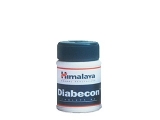Importance of micromeritics in pharmacy terms of useful information
In the field of pharmacy, micromeritics plays a crucial role in understanding the physical and chemical properties of pharmaceutical materials. It involves the measurement of particle size, shape, surface area, and porosity, providing valuable insights into the behavior and performance of drugs. Micromeritics helps pharmaceutical scientists in the formulation and development of drug products, ensuring their safety, efficacy, and quality.
The particle size of pharmaceutical materials has a significant impact on drug absorption, dissolution, and stability. By using techniques such as laser diffraction, sedimentation, and microscopy, pharmaceutical scientists can accurately measure the particle size distribution of drug substances and formulate drug products with optimal bioavailability. Understanding the particle shape and surface area allows researchers to assess the flowability, compressibility, and dissolution rate of pharmaceutical powders, ultimately affecting the drug's performance in the body.
Furthermore, micromeritics plays a crucial role in the characterization of excipients, which are essential ingredients in drug formulations. Excipients often determine the stability, solubility, and bioavailability of a drug. Micromeritic techniques, such as gas adsorption and mercury intrusion porosimetry, enable researchers to evaluate the porosity and surface properties of excipients, helping to optimize their functionality in drug formulations.
Overall, micromeritics provides a wealth of useful information in the field of pharmacy, offering valuable insights into the physical and chemical properties of pharmaceutical materials. By understanding particle size, shape, surface area, and porosity, pharmaceutical scientists can optimize drug formulations, ensuring the efficacy, safety, and quality of drug products. Micromeritics is an essential tool in the development and formulation of pharmaceuticals, contributing to advancements in drug delivery systems and enhancing patient care.
The Importance of Micromeritics in Pharmacy
Micromeritics is a crucial aspect of pharmacy that deals with the measurement and characterization of small particles. It plays a vital role in various pharmaceutical processes, from drug development to formulation and quality control.
One of the key reasons why micromeritics is important in pharmacy is its ability to provide valuable information about the physical properties of particles. By analyzing particle size, shape, surface area, and porosity, pharmaceutical scientists can better understand how these properties affect drug performance and formulation stability.
Furthermore, micromeritics helps in the development of drug delivery systems. It enables scientists to optimize the particle size and distribution to enhance bioavailability and drug release kinetics. This knowledge is especially crucial in the formulation of controlled-release systems, where the release of the drug needs to be controlled over a specific period of time.
Micromeritics also plays a significant role in pharmaceutical quality control. By analyzing the particle size distribution of raw materials and finished products, pharmacists can ensure consistency and uniformity in drug formulations. This is particularly important in dosage forms like tablets, where the particle size can affect the dissolution rate and ultimately, the drug's efficacy.
In addition to formulation and quality control, micromeritics is essential in pharmaceutical manufacturing processes. It helps in optimizing processes like milling, granulation, and blending, where the particle size and distribution can affect the efficiency and effectiveness of the process.
In conclusion, micromeritics plays a crucial role in pharmacy by providing valuable information about the physical properties of particles, aiding in drug development and formulation, ensuring quality control, and optimizing manufacturing processes. Its significance cannot be overstated in the field of pharmacy, as it helps to improve drug performance, stability, and patient outcomes.
Understanding Particle Size Distribution Analysis
Particle size distribution analysis is an important technique used in various industries, including pharmacy. It involves the measurement and analysis of the size range of particles in a sample, providing valuable information about the physical properties of the material.
One key aspect of particle size distribution analysis is understanding the distribution of particle sizes within a sample. This distribution can be described using metrics such as the mean particle size, median particle size, and the range of particle sizes. These metrics help in characterizing the overall size profile of the particles and can be used to predict how the material will behave in different applications.
There are several methods available for particle size distribution analysis, each with its own advantages and limitations. One commonly used technique is laser diffraction, which involves passing a laser beam through the sample and measuring the scattering pattern. This method provides a fast and convenient way to analyze a wide range of particle sizes, making it suitable for a variety of applications.
Another method is sedimentation analysis, which involves measuring the settling velocity of particles in a liquid medium. This method is particularly useful for analyzing smaller particle sizes and can provide valuable information about particle shape and density.
Particle size distribution analysis is particularly important in pharmacy as it can impact the efficacy and stability of pharmaceutical formulations. For example, the size of drug particles can affect their dissolution rate and bioavailability. Additionally, particle size distribution analysis can also help in controlling the quality of drug products, ensuring consistency and uniformity in dosage forms.
Overall, understanding particle size distribution analysis is crucial for various industries, including pharmacy. It provides valuable information about the physical properties of materials and can impact product performance and quality. By utilizing appropriate techniques and interpreting the data obtained, scientists and researchers can make informed decisions and optimize their processes for better outcomes.
Benefiting Pharmaceutical Formulation Development
1. Optimization of drug delivery systems
Micromeritics plays a crucial role in the development of pharmaceutical formulations by enabling the optimization of drug delivery systems. By analyzing the particle size and distribution, surface area, and porosity of drug particles, researchers can design formulations that enhance drug solubility, bioavailability, and stability.
Understanding the micromeritics properties of drug particles helps in the selection of appropriate excipients and formulation techniques, such as micronization, lyophilization, or spray drying, to improve drug delivery and target specific sites in the body.
The knowledge of micromeritics helps in formulating controlled-release drug delivery systems, where the release rate and duration of drug action can be precisely tailored to achieve optimal therapeutic outcomes.
2. Enhancing drug stability
Micromeritics is instrumental in enhancing drug stability during formulation development. By analyzing the specific surface area and porosity of drug particles, researchers can identify potential degradation pathways, design appropriate protective measures, and select suitable packaging materials.
Microscopic examination of drug particles can reveal the presence of impurities, polymorphic forms, or crystal defects that may affect drug stability. By understanding the micromeritics properties, such as particle size, shape, and surface chemistry, researchers can modify the formulation to mitigate these stability issues and prolong the shelf life of the drug product.
3. Improving bioavailability
Micromeritics plays a pivotal role in improving the bioavailability of poorly soluble drugs. By manipulating the particle size and distribution, researchers can increase the surface area and enhance the dissolution rate of drug particles, thereby improving their absorption and bioavailability.
Moreover, micromeritics analysis helps in identifying the optimal solid-state form of a drug, such as amorphous or crystalline, which can significantly impact its solubility and bioavailability. By selecting the most suitable solid-state form based on micromeritics data, researchers can improve the drug's therapeutic efficacy.
In conclusion, micromeritics provides valuable insights into the properties of pharmaceutical materials, enabling researchers to optimize drug delivery systems, enhance drug stability, and improve drug bioavailability. Its application in pharmaceutical formulation development paves the way for the development of safe, effective, and patient-centric drug products.
Enhancing Drug Delivery Systems
Developing effective drug delivery systems is crucial in the field of pharmacy to ensure optimal therapeutic outcomes for patients. Micromeritics, the science of measuring and analyzing small particles, plays a significant role in enhancing drug delivery systems.
Better formulation design: Micromeritics enables the precise characterization and understanding of particle size, shape, and surface properties. This information aids in the development of drug formulations with improved solubility, stability, and bioavailability.
Optimized drug release: Micromeritics helps in studying the dissolution and release behavior of drugs from various delivery systems. By understanding the effect of particle size and structure on drug release, researchers can design delivery systems that achieve controlled and sustained release of medications.
Targeted drug delivery: Micromeritics allows for the design of drug carriers and nanoparticles with specific size and surface properties. These properties can be tailored to target specific cells or tissues in the body, increasing drug efficacy and reducing potential side effects.
Improved drug stability: Micromeritics aids in analyzing the physical stability of drug particles, including issues such as aggregation and polymorphism. This knowledge helps in the development of stable drug formulations that retain their efficacy over time.
Enhanced bioavailability: By understanding the relationship between particle size and bioavailability, micromeritics assists in optimizing drug absorption and distribution in the body. This can lead to improved therapeutic outcomes and reduced dosages of medications.
In conclusion, micromeritics plays a crucial role in enhancing drug delivery systems. By utilizing the wealth of information it provides, pharmacy professionals can develop more effective and targeted drug formulations, leading to improved patient care and treatment outcomes.
Evaluating Powder Flowability
When working with powders in the pharmacy, it is crucial to evaluate their flowability. The flowability of powders affects their handling, processing, and performance in various pharmaceutical applications. Understanding and defining powder flowability properties can help to optimize formulation and manufacturing processes, improve product quality, and ensure consistent results.
Common Techniques for Assessing Powder Flowability
There are several techniques available for evaluating powder flowability:
- Angle of repose: One commonly used method involves measuring the angle formed by a mound of powder that is allowed to flow freely from a funnel. The angle of repose provides an indication of the powder's ability to flow and pack.
- Flow rate: Another approach is to measure the time it takes for a given amount of powder to flow through a specific orifice. This provides an indication of the powder's flow rate and can be used to compare the flowability of different powders.
- Hausner ratio: The Hausner ratio is calculated by dividing the tapped density of a powder by its bulk density. It is a measure of the powder's ability to pack and provides an indication of its flowability.
- Carr's index: Carr's index is calculated by subtracting the bulk density of a powder from its tapped density and dividing the result by the tapped density. It is a measure of the powder's compressibility and flowability.
Importance of Evaluating Powder Flowability in Pharmacy
Assessing powder flowability is essential in pharmacy for several reasons:
- Efficient manufacturing: Powders that flow poorly can cause issues such as clogging in equipment, inconsistent dosing, and difficulties in achieving uniform mixing. Evaluating powder flowability helps identify potential problems and optimize manufacturing processes.
- Product quality: Poor powder flowability can result in uneven distribution of ingredients, leading to variations in drug content and efficacy. By evaluating powder flowability, pharmaceutical companies can ensure consistent product quality.
- Formulation optimization: Knowledge of powder flow properties can aid in the selection of excipients and formulation design. By understanding the flow behavior of different powders, pharmacists can develop formulations that enhance flowability and processability.
- Packaging considerations: Powders that do not flow easily can lead to issues during packaging, such as incomplete filling of capsules or tablets. Evaluating powder flowability helps ensure proper packaging and efficient use of materials.
In conclusion, evaluating powder flowability is an important aspect of pharmacy practice. It provides valuable information for optimizing manufacturing processes, ensuring product quality, and formulating effective pharmaceutical products.
Ensuring Content Uniformity in Tablets
The Importance of Content Uniformity
Content uniformity is a critical parameter in the manufacturing of tablets. It refers to the consistency of the active ingredient or ingredients in each tablet within a batch. Ensuring content uniformity is crucial to ensure that each tablet contains the correct amount of the active ingredient to deliver the desired therapeutic effect.
Challenges in Achieving Content Uniformity
Achieving content uniformity can be challenging due to various factors. One of the main challenges is the distribution of the active ingredient during the manufacturing process. Inadequate mixing or blending of the ingredients can result in content inconsistencies, leading to variations in the potency of the tablets.
Other factors that can affect content uniformity include variations in particle size, density, and flow properties of the ingredients. If these properties are not well-controlled, the active ingredient may not be distributed evenly, resulting in differences in drug release and efficacy.
Methods for Ensuring Content Uniformity
Pharmaceutical manufacturers employ various methods to ensure content uniformity in tablets. One of the primary methods is the use of advanced mixing and blending techniques. These techniques include tumble blending, high-shear mixing, and fluid bed granulation, among others. These methods help in achieving better dispersion and distribution of the active ingredient in the tablet formulation.
In addition to mixing techniques, pharmaceutical manufacturers also utilize process analytical technology (PAT) tools to monitor and control the content uniformity during the manufacturing process. These tools, such as near-infrared spectroscopy, provide real-time analysis of the active ingredient content and help in adjusting process parameters to ensure uniformity.
Regulatory Requirements
The regulatory authorities, such as the FDA, have set guidelines and standards for content uniformity in tablets. These guidelines specify acceptable limits for content deviations and require manufacturers to demonstrate the reliability and reproducibility of their manufacturing processes. Compliance with these regulatory requirements is essential to ensure the safety and efficacy of the tablets.
Pharmaceutical manufacturers are required to conduct thorough testing and analysis to validate the content uniformity of their tablets. This involves sampling tablets from different locations within a batch and analyzing them for the active ingredient content. The results of these tests must meet the predetermined acceptance criteria to demonstrate content uniformity.
In conclusion, ensuring content uniformity in tablets is a critical aspect of pharmaceutical manufacturing. It requires careful control of various factors, including ingredient distribution, particle properties, and manufacturing processes. By employing appropriate mixing and blending techniques and utilizing advanced analytical tools, pharmaceutical manufacturers can effectively ensure content uniformity and deliver safe and effective tablets to patients.
Improving Drug Stability and Shelf-life
Drug stability and shelf-life are critical factors for pharmaceutical manufacturers, as they directly impact the quality and effectiveness of medications. Micromeritics plays a crucial role in improving drug stability and extending the shelf-life of pharmaceutical products.
Understanding Particle Size Distribution
Particle size distribution is an essential parameter in determining drug stability. Small particles tend to have larger surface areas, allowing for increased contact with reactive substances, such as moisture, oxygen, and light. This can lead to chemical degradation and a decrease in drug potency over time. Micromeritics allows for the measurement and analysis of particle size distribution, enabling researchers to identify optimal particle sizes that minimize degradation and maximize drug stability.
Controlling Particle Shape and Surface Area
The shape and surface area of drug particles also play a significant role in drug stability. Irregularly shaped particles or particles with high surface areas are more prone to degradation, as they provide more sites for chemical reactions to occur. Micromeritics helps pharmaceutical manufacturers understand and control particle shape and surface area, allowing for the design and production of drugs with enhanced stability and extended shelf-life.
Encapsulation and Controlled Release Systems
Micromeritics provides valuable insights into the development of encapsulation techniques and controlled release systems. By precisely measuring and controlling particle sizes, drug loading, and release mechanisms, encapsulation technologies can protect drugs from external factors that may degrade their stability. Controlled release systems can further extend the shelf-life of drugs by regulating their release rate, ensuring a consistent dosage over an extended period.
In conclusion, micromeritics plays a vital role in improving drug stability and extending shelf-life in the pharmaceutical industry. By understanding and controlling particle size distribution, shape, surface area, and utilizing encapsulation and controlled release systems, pharmaceutical manufacturers can enhance drug stability, ensuring the safety and efficacy of medications for patients.
Follow us on Twitter @Pharmaceuticals #Pharmacy
Subscribe on YouTube @PharmaceuticalsYouTube





Be the first to comment on "Importance of micromeritics in pharmacy terms of useful information"